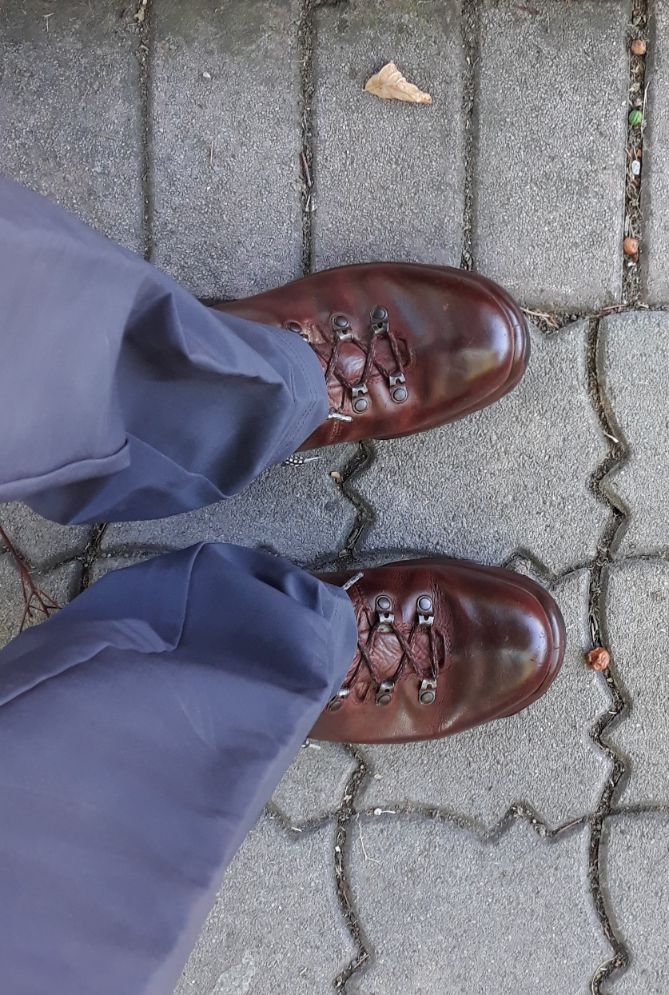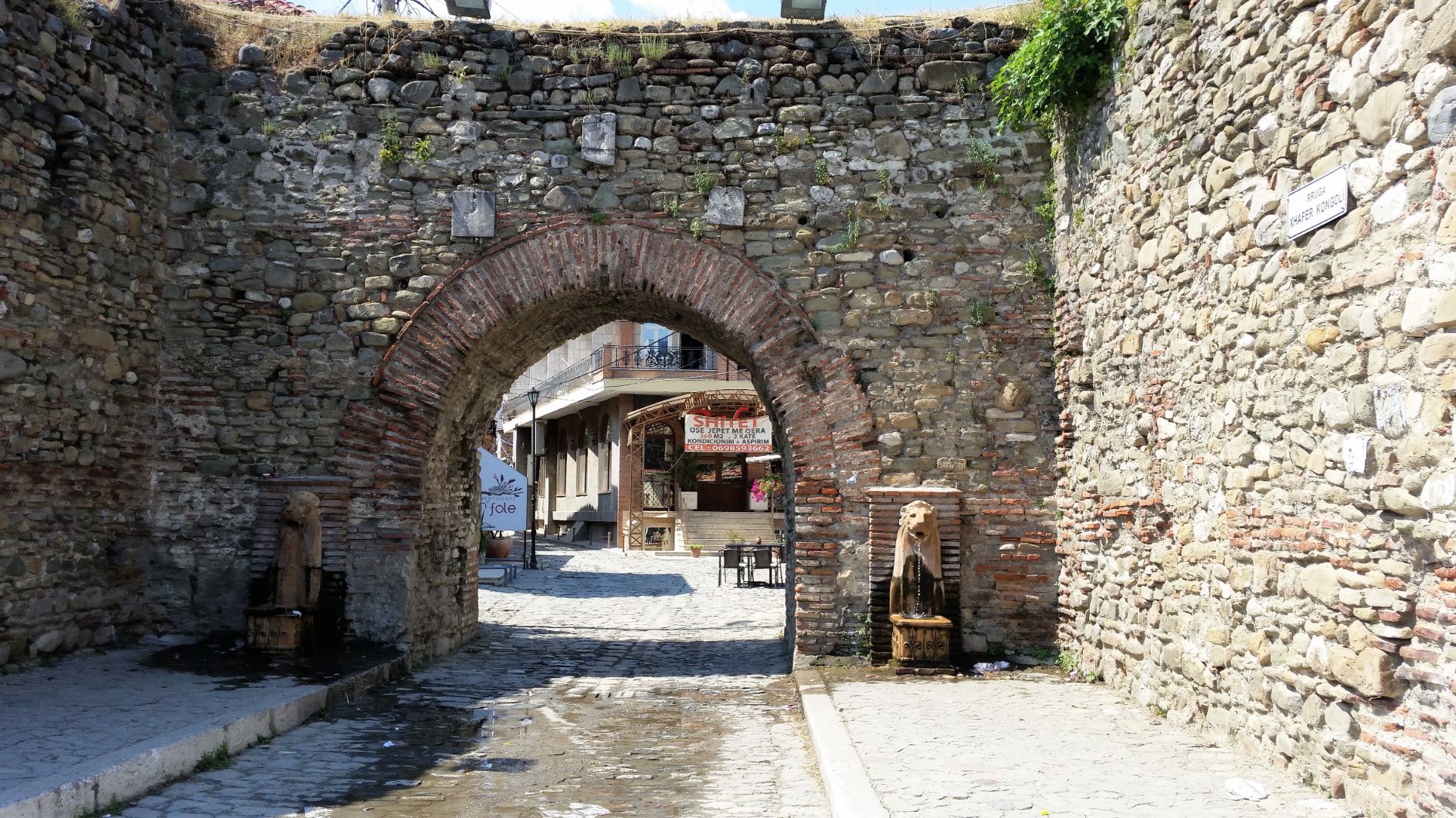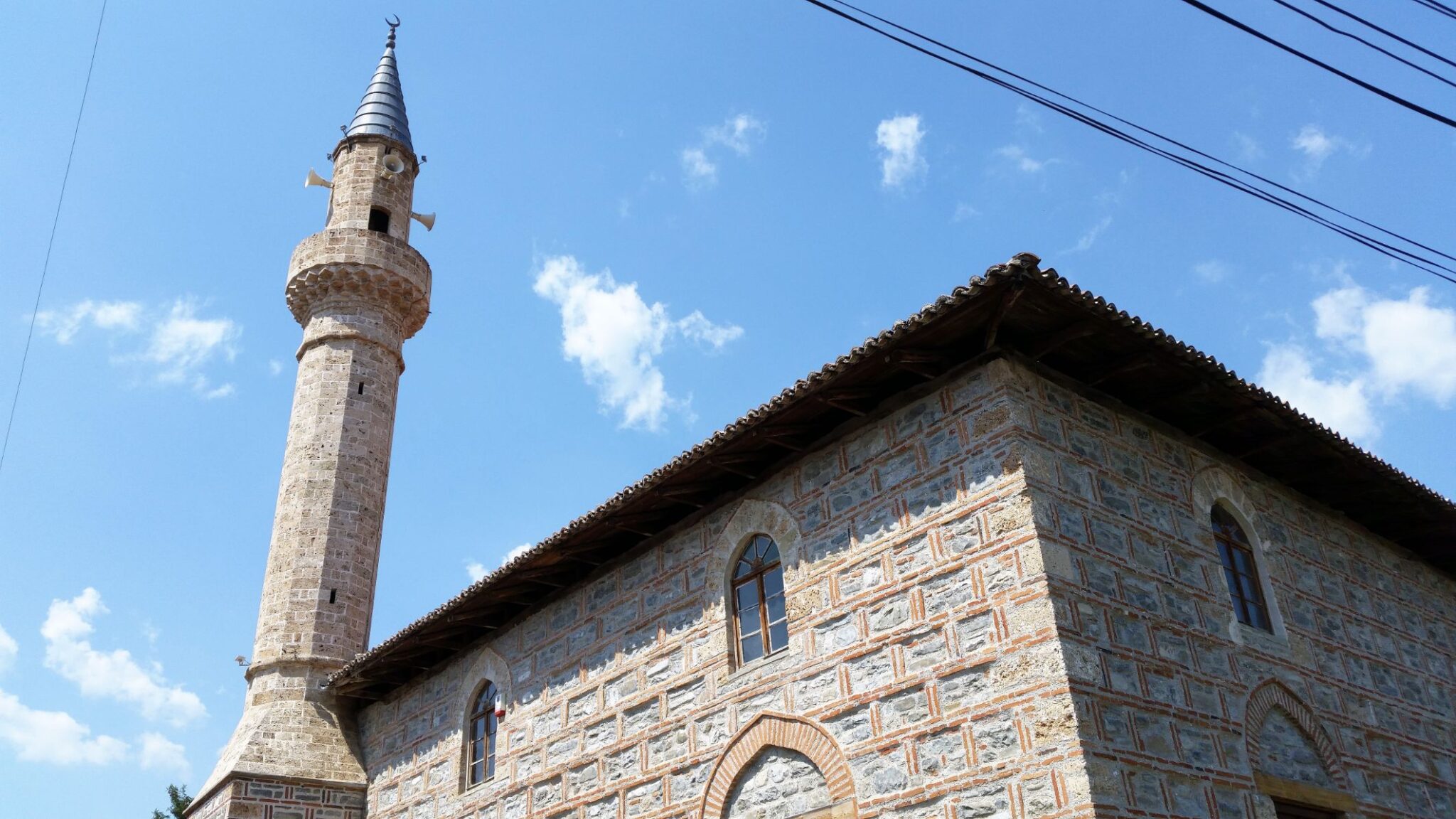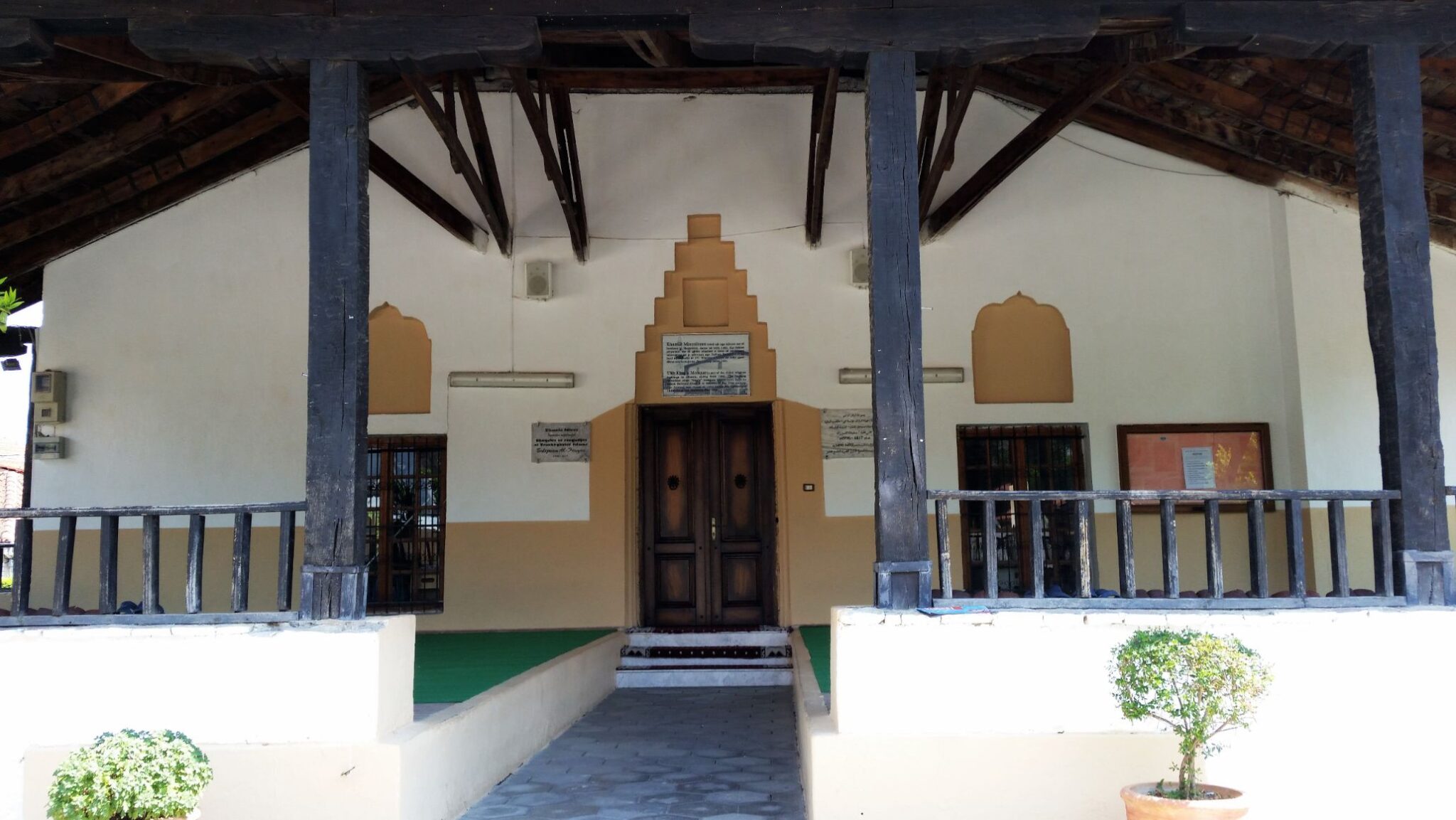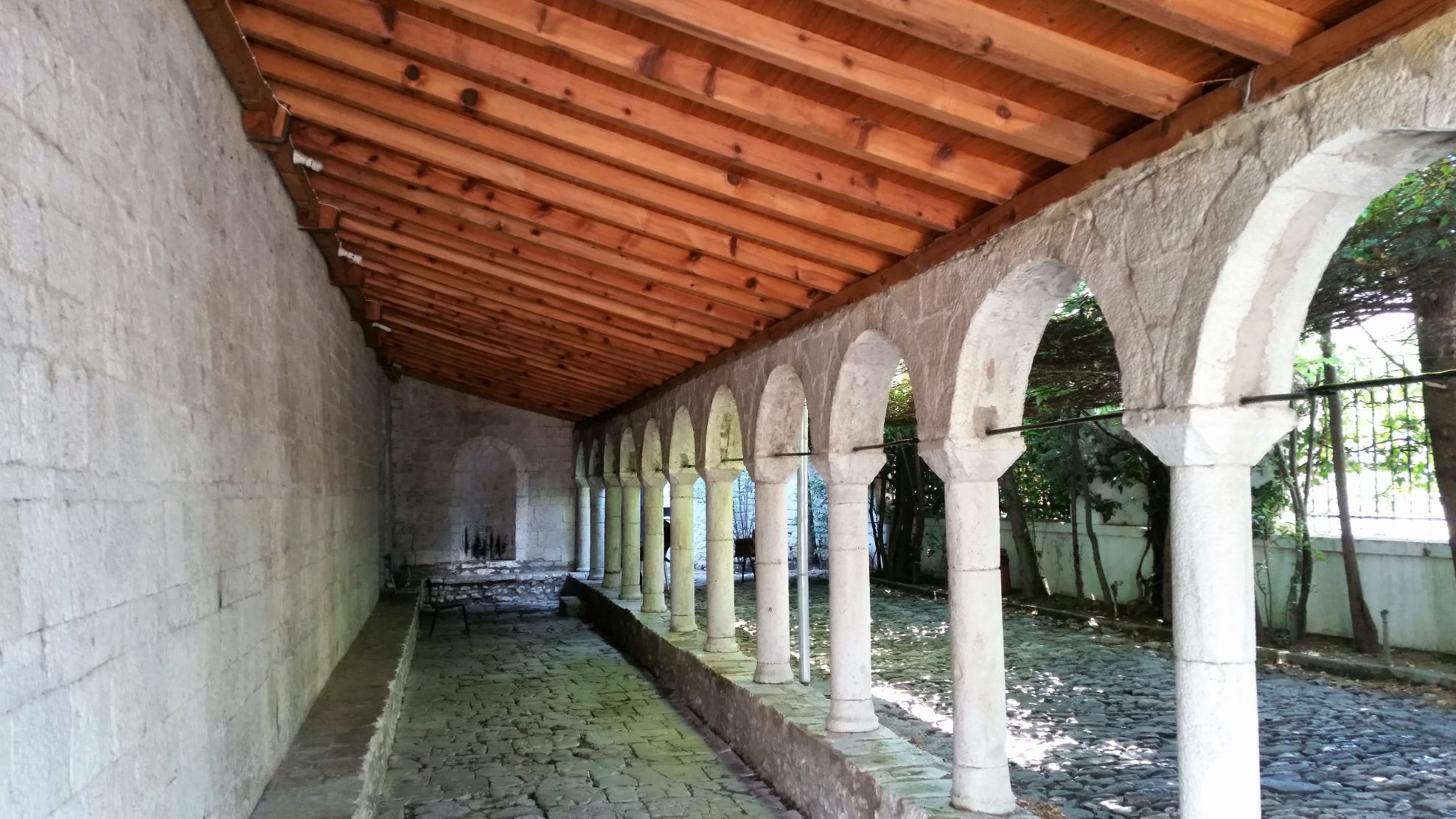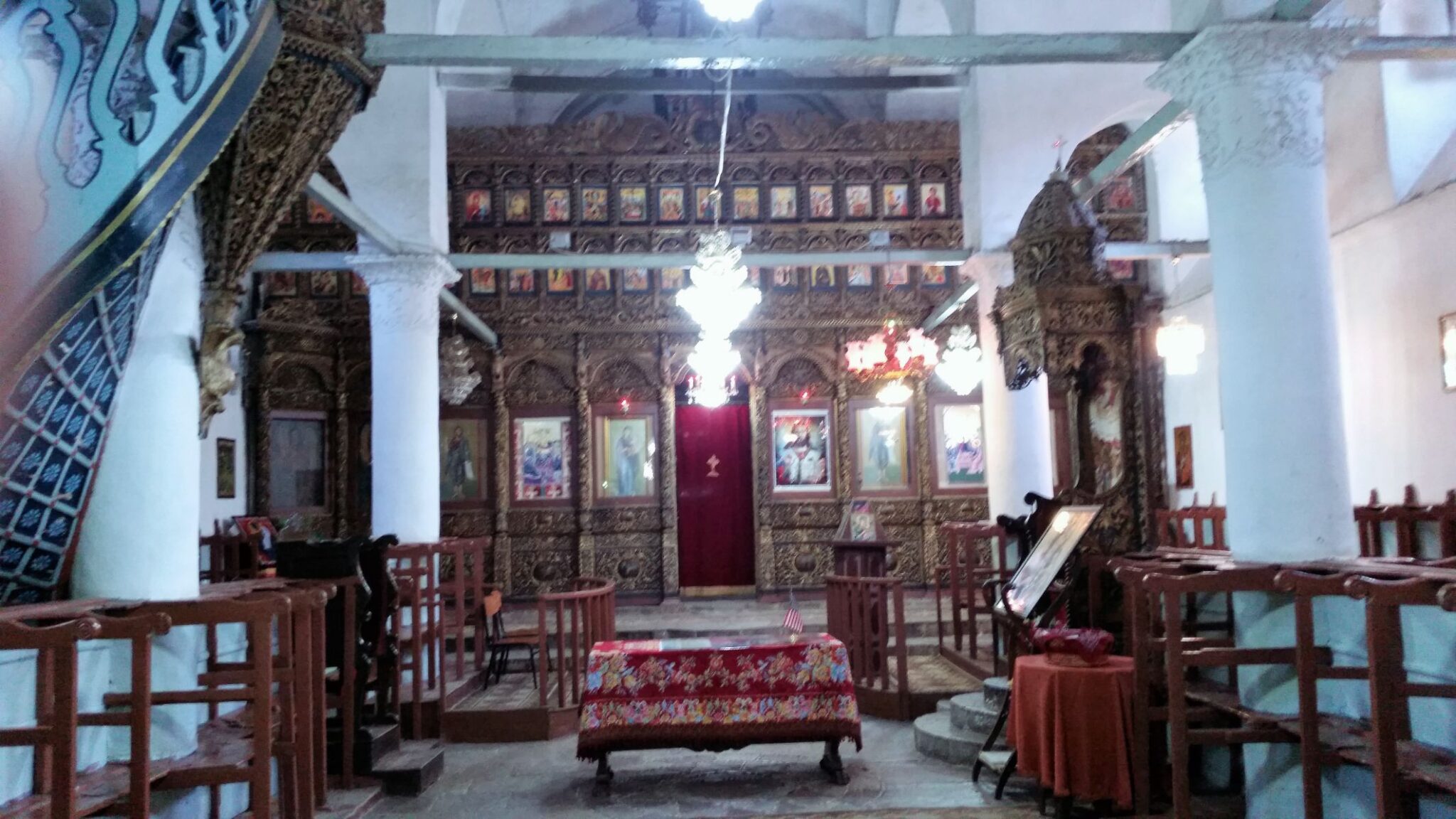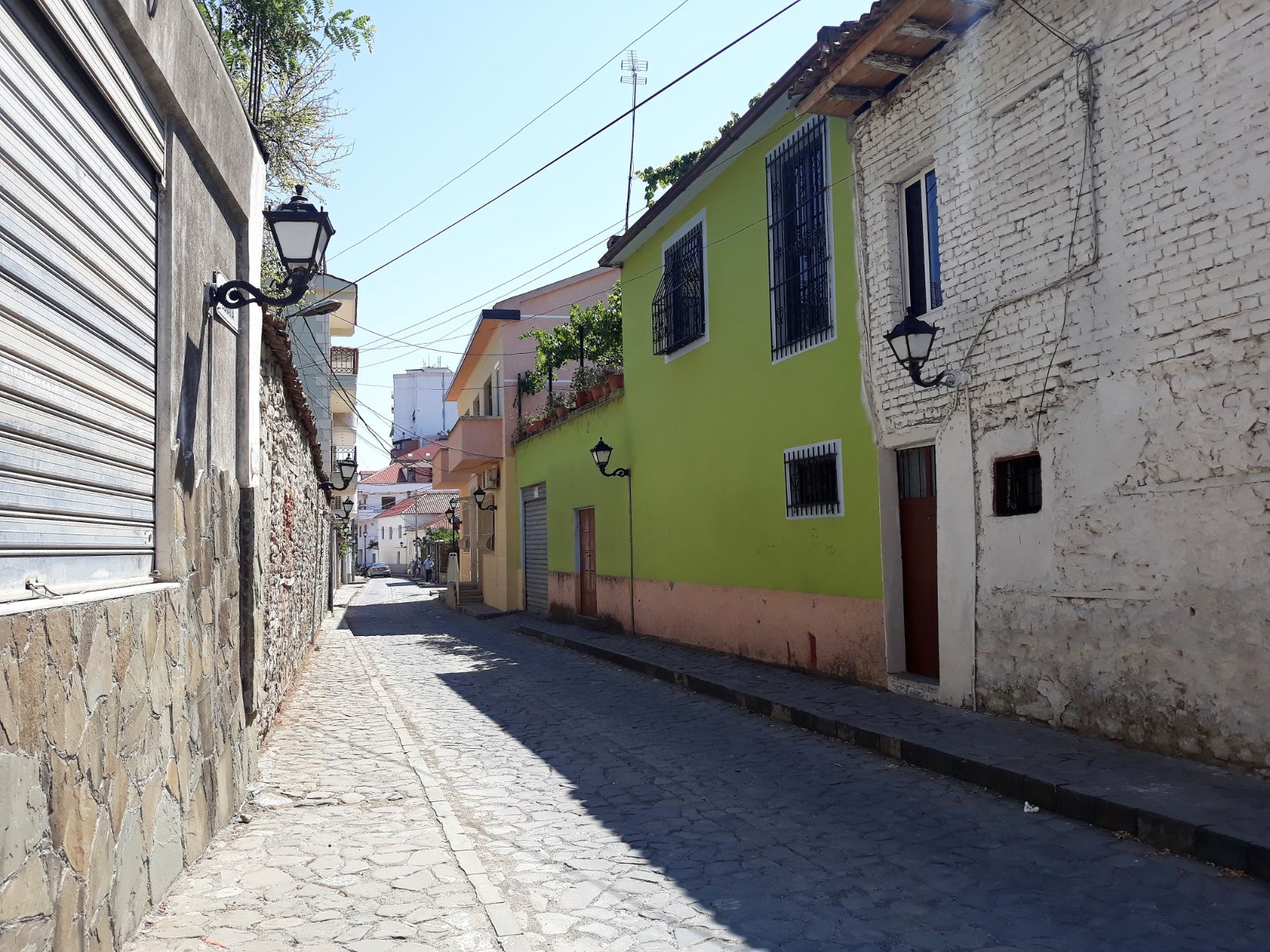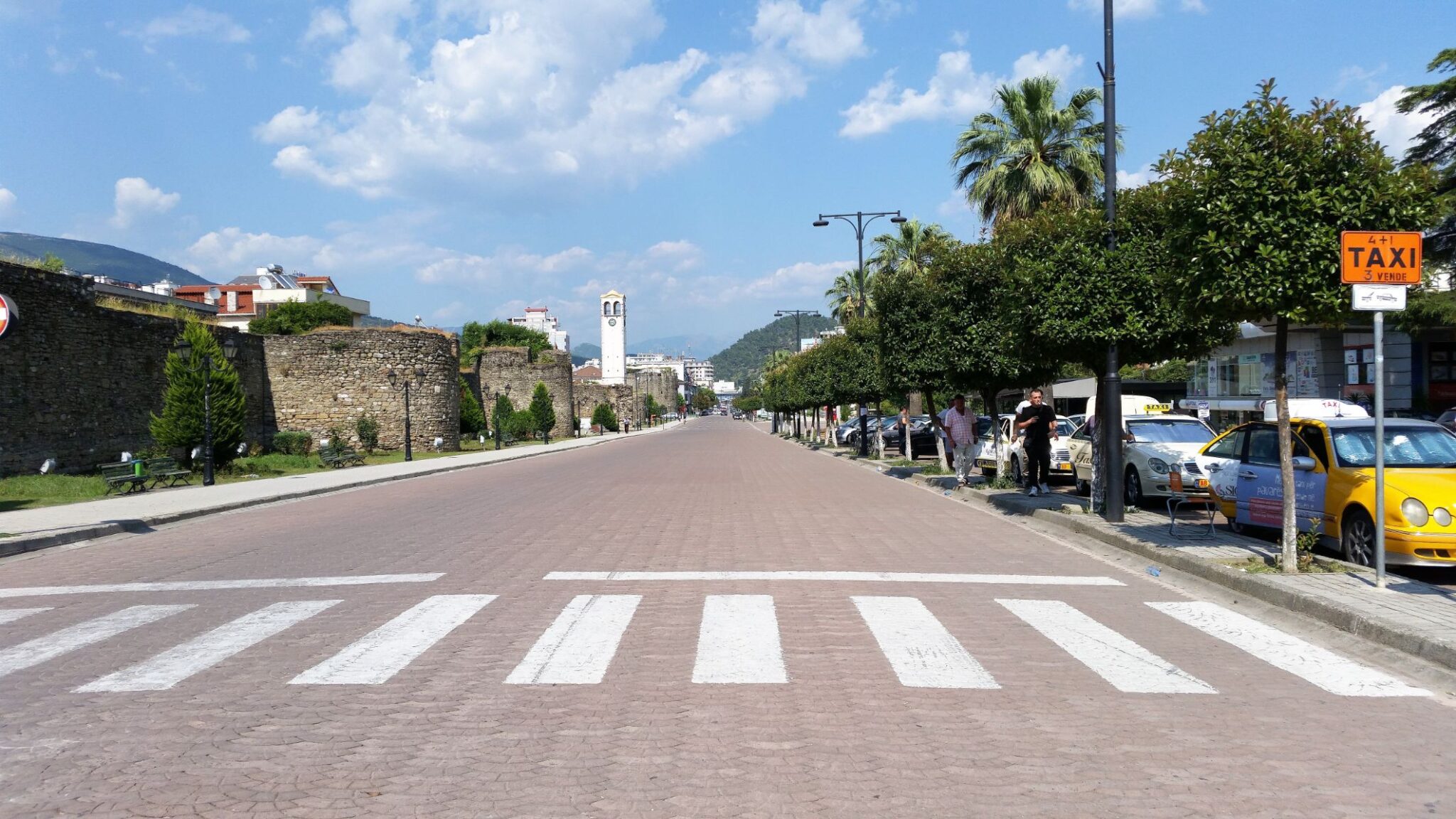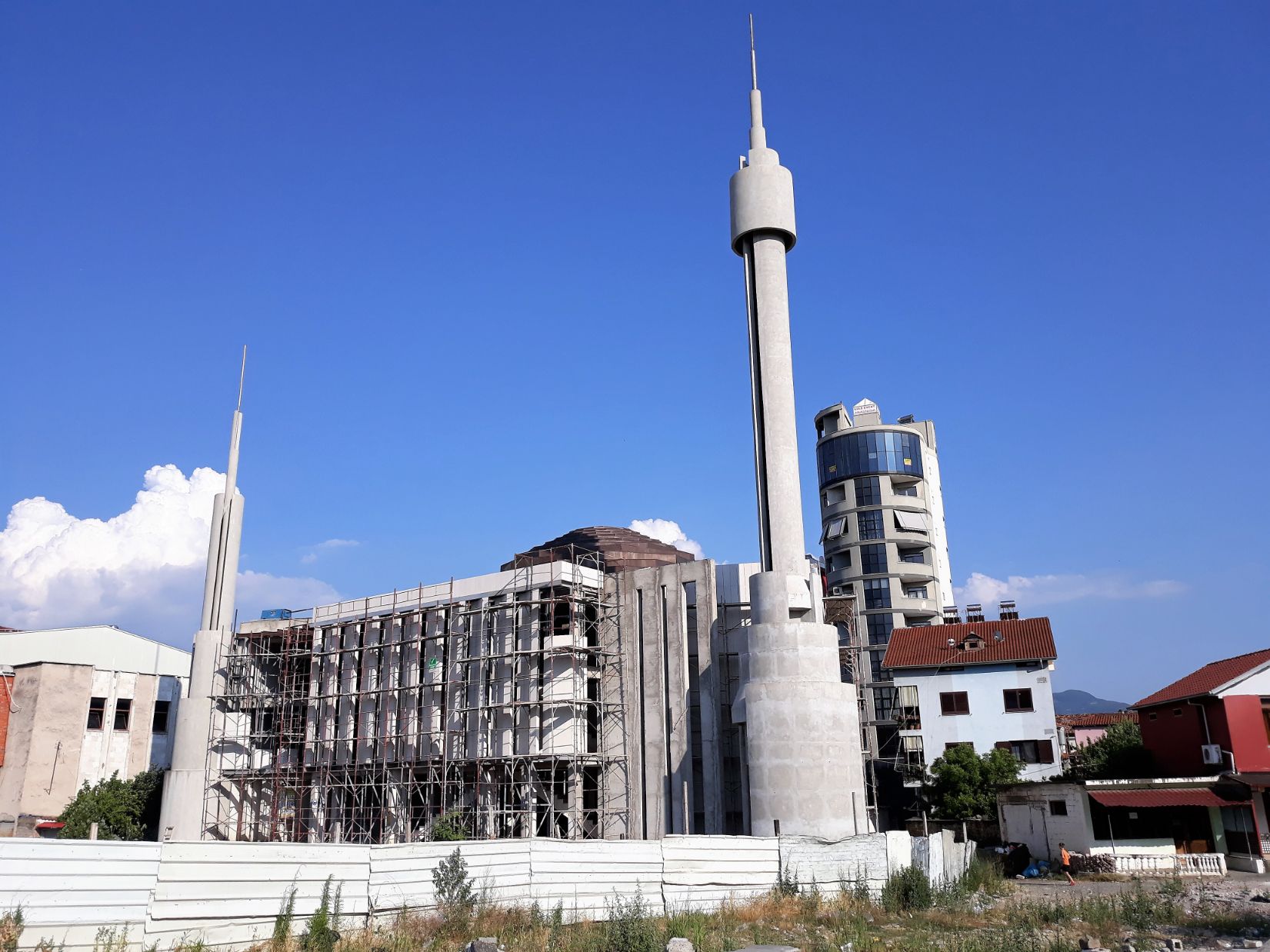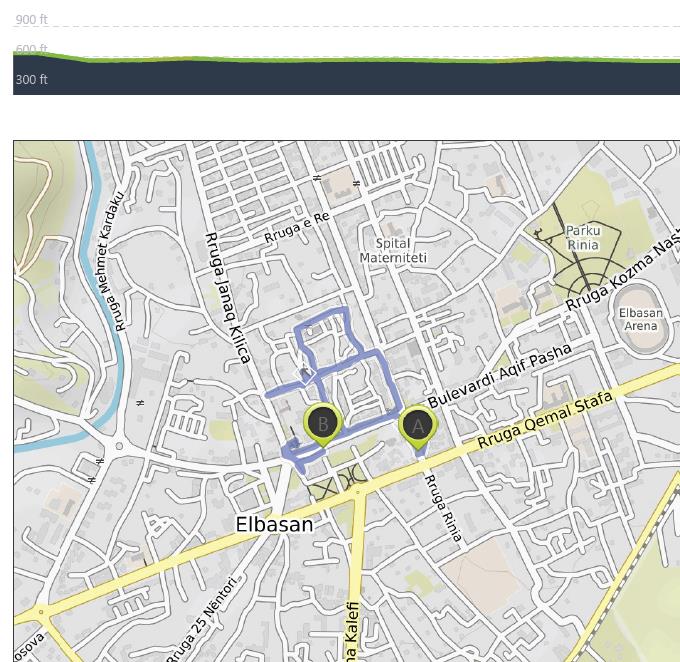Elbasan – 6th July
Distance: 2.63 km – Elevation +20 m -40 m
Weather: Sunny. Temperature: High 33 degrees
I elected to stay another day and explore the history of this extraordinary Albanian city. It was one of the major stations on the Roman Via Egnatia, Mansio Scampa, and after the fall of the Roman empire, it was occupied by the Byzantines and then the Ottomans. The Via Egnatia runs from west to east straight through the centre of the old city and has been carefully restored.
I started my day with a desire to get my boots cleaned.So I returned to the market area with its hubbub of activity where I had seen a traditional “Shoeshiner” plying his trade as I walked into the city yesterday. My boots uncleaned since leaving Rome were soon restored to a state of respectability.
I entered the ancient walled city through the south gate and immediately I felt the peace and tranquillity away from the busy market area. A place where Islam, Catholicism, and Orthodox Christianity co-exist together in extraordinary harmony.
I walked along the cobbled streets past old Ottoman era houses to reach the King’s Mosque built by Sultan Bayazit II around 1482-1485. It is one of the oldest Mosques in Albania and escaped demolition during the communist era because bulldozers were unable to enter the old city through the narrow entrance gates.
After crossing over the Via Egnatia I came to the Albanian Orthodox Church of St. Marys and one of the highlights of my day, the privilege of meeting Father Nikolla who runs the church. He is a rebel within the Orthodox community maintaining that the Albanian Orthodox Church should be headed by an Albanian and not a Greek bishop. He is not well, Parkinson’s intrudes significantly on his life but he kindly arranged for his carer to open the church so that I could enjoy the beauty inside. I read in the Via Egnatia guidebook that during the communist era when all religion was banned, his father who was also a priest was deported, tortured and killed for continuing to practice his faith and singing a holy song.
The west wall of the old city clearly demonstrates the three periods of occupation with three identifiable layers of construction, Roman, Byzantine, and Ottoman. Here the Vera Scampi restaurant (where I dined last night) blends in with ancient walls and you can see excavations exposing the Roman ruins.
Leaving the old city I returned to the Bulevadi Qemal Stafa with its historic clock tower. Originally built in the 17th century it was replaced with a wooden tower 1854. The existing tower was built by Aqif Pashe Elbasaniin in 1899. An inscription says that when the clock tower rings it shows the exact time from all four directions. There is also a new mosque under construction Xhamia Ballie
I am glad I stayed that extra day to better understand the history of this wonderful city.
